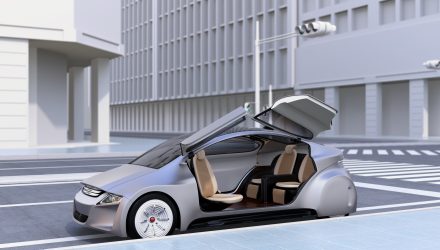How close are we? Most of today’s technology supports Level 4 deployments: vehicles at low speeds in low complexity environments with low levels of interaction. Level 4 is most appropriate (and safe) on private roads, such as in retirement communities and school campuses, or on low-congestion public roads. But there are still many situations that technology is not yet able to address effectively. Traffic congestion, high speeds, inclement weather (rain, snow), unpredictable human drivers, remote areas with no high-density maps, and navigating “corner cases” (extreme situations outside the normal learning parameters). All of these present challenges that require a higher level of machine learning.
Today’s self-driving vehicles are able to complete massive amounts of simultaneous computations, crunch huge quantities of data, and run intricate algorithms in real time. These technologies have taken us to a point in time where we can realistically discuss the future of full autonomy on the roads. The next milestone, driving autonomously for long stretches of highway, is almost within reach. But on the road to true Level 5 autonomy, there is still plenty of work ahead.
Building a Map to the Future
How do we get from where we are today to the Holy Grail of Level 5 autonomy? To achieve that goal, we are working to bring in the human-like elements needed to advance today’s technology to Level 5 capabilities. Machines can already outperform humans in many ways, such as estimating with great accuracy how quickly another vehicle is moving. What they still lack, however, is the ability to “see” like the human eye, to effectively recognize objects and situations and make sense of them in the real world. While we spend our whole lives learning how to observe the world and make sense of it, machines require algorithms to do this, and data—lots and lots (and lots!) of data, all annotated to translate what each thing being perceived actually means. To make Level 5 autonomy possible, we have to develop new algorithms that help them learn from far fewer examples in an unsupervised way, without constant human intervention.
To enable today’s self-driving vehicles to operate effectively without Level 5 autonomy, map-based solutions provide a stopgap. To begin, a vehicle drives on every possible road segment and makes a map in feature space. That map provides autonomous vehicles with the data needed to navigate each ride, including planning a path from point A to point B and localizing vehicles as it moves along the designated route. This is why most self-driving car companies only test their fleets in certain major cities where they’ve developed detailed 3D maps that are meticulously labeled with the exact positions of traffic lanes, curbs, stop signs, and more. This detailed mapping includes environmental features detected by the sensors of the vehicle. Maps are created using 3D LIDAR systems that rely on light to scan the local space, accumulating millions of data points and extracting the features defining each place.
While the mapping system has served its purpose of getting AVs on the road, the reliance on detailed pre-built maps is a problem. To achieve the goal of universal acceptance, AVs must be able to drive in environments where maps do not exist. On the millions of miles of roads that are unpaved. On unlit or unreliably marked streets. Anywhere and everywhere a person would want to drive.
The Road to Full Autonomy
At MIT, our CSAIL team has been developing a solution to serve as a first step for enabling self-driving cars to navigate unmapped roads using only GPS and sensors. Called MapLite, our system combines GPS data (similar to what is available today on Google Maps) with data taken from LIDAR sensors. Working in concert, these two elements allow a car to drive autonomously on unpaved country roads and reliably detect what’s ahead more than 100 feet in advance. Other researchers have also been working on mapless approaches, using both perception sensors like LIDAR and vision-based approaches, with varying degrees of success.
Anywhere, anytime autonomy is still some years away, and technology isn’t the only barrier. While progress has been significant on the technical side, getting policy to catch up has been an understandably complex and incremental process. Policymakers have yet to decide how autonomous vehicles should be regulated, including what kinds of vehicles should be allowed on the road, who is allowed to operate them, how they should safety be tested, and how liability should be managed. They are still wading through the implications of a potential patchwork of state-by-state laws and regulations and determining the impact of harmonizing these policies. And they are just beginning to search for the most effective ways to encourage AV adoption, such as smart road infrastructure, dedicated highway lanes, and manufacturer or consumer incentives.
These are complex issues, but as policymakers continue to refine the details on their end, researchers are pushing the boundaries and driving change at lightning speed. Level 4 autonomy is already here, and the Holy Grail of Level 5 isn’t far behind. I have no doubt that, very soon, self-driving cars “will transform the way we live, the way we get around, and the way we do business.” Our team at CSAIL is working to make safe, reliable, and universally accepted self-driving cars a reality as soon as possible.
For more trends in robotics and artificial intelligence, visit the Robotics & AI Channel.
